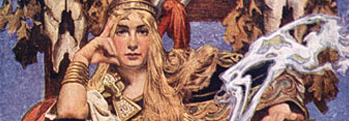Uisneach
Irish and Celtic myths and legends, Irish folklore and Irish fairy tales and Legendary Royal Sites in Ireland
Uisneach
 The spiritual and geographical heart of Ireland is the Hill of Uisneach overlooking a wide plain in view of twenty counties, where the borders of all five kingdoms met, where great decisions were made and assemblies were held, the mórdáil Uisnig, and home to Ail na Mireann, or the Stone of Divisions. On the hill all around this strangely shaped boulder can be found tombs and strange monuments, standing stones, sacred wells and ring forts of great antiquity.
The spiritual and geographical heart of Ireland is the Hill of Uisneach overlooking a wide plain in view of twenty counties, where the borders of all five kingdoms met, where great decisions were made and assemblies were held, the mórdáil Uisnig, and home to Ail na Mireann, or the Stone of Divisions. On the hill all around this strangely shaped boulder can be found tombs and strange monuments, standing stones, sacred wells and ring forts of great antiquity.
This is the place most associated with the fall of the hero Lú and home to Dagda, Eriú and the mysterious Druid Mide, who lit a sacred fire that blazed for seven years in Ireland on this hill.
There is evidence in Uisneach for human activity spanning five thousand years or more, and it is closely associated with the Bealtaine festival. Its name means "the place of cinders" or "the angular place". it may have been a sanctuary site where flames were kept burning perpetually and there are many pits nearby with animal sacrifices covered by large stones. It was considered a crossing place between this world and the otherworld.
Geoffrey of Monmouth's Historia Regum Britanniae says that Stonehenge originally stood at the 'hill of Killare' in Ireland, before being moved to Britain. This is thought to refer to Uisneach, as Killare is a place at the foot of the hill.
The Clann Cholmáin chieftains, who became kings of Mide, were titled the "Kings of Uisnech" until Brian Ború came in 999 AD to claim those lands and the High Kingship of all Ireland. Uisneach was also the royal seat of one of Ireland’s most powerful medieval dynasties - the Uí Néill.
Royal Sites of Ireland
Díarmata mac Cerbaill was the last pagan High King of Ireland, who made his seat at Temair and followed the ancient rituals of inauguration, including the ban-feis or marriage to goddess of the land. His reign was a strange one where the mysteries of ancient Ireland vied with the light of Christianity and many powers rose and fell, often by ... [more]
Cashel of the Kings, the mighty Rock of Cashel was in olden times known as the Royal Site of the Kings of Mumu, a place we today call Munster. It is a great uplifting of raw limestone from the surrounding grassy plains, which old tales tell was hurled from a mountain called the Devil's Bit, in County Tipperary. It is said to have been where ... [more]
The great northern fastness of Emain Macha means "Macha's twins" or "Macha's pair", and its tale is bound tightly with the local goddess Macha, after whom is also named Armagh, Ard Macha. The ancient Greek philosopher Ptolemy drew a map of the world, upon which he marked a place called Isamnion in southern Ulster, which ... [more]
The spiritual and geographical heart of Ireland is the Hill of Uisneach overlooking a wide plain in view of twenty counties, where the borders of all five kingdoms met, where great decisions were made and assemblies were held, the mórdáil Uisnig, and home to Ail na Mireann, or the Stone of Divisions. On the hill all around this strang ... [more]
The seat of the High Kings of Ireland stretching back to the Tuatha and the Fir Bolg, Tara or Temair as it was known then, is said to have been the seat of a hundred and forty two kings, kingships won by battle, contest and merit, not passed down father to son as in more primitive cultures. It is also known as Teamhair na Rí, 'Tar ... [more]
Dún Ailinne is one of the great Royal Sites of Ireland, "a place of assemblies, a Rath with royal roads, a Grianan or palace, and a Royal Dún", where great ceremonies, rituals and gatherings took place, seat and crowning-place of the Gaelic Kings of Leinster. All that remains of it now is a large circular embankment a ... [more]
The glorious stronghold of Rathcrogan, or Ráth Cruachan, was the Royal Site of the great Kings and Queens of the Western lands for thousands of years. Within its sacred embrace were held the thronging ceremonial assemblies or óenach, and people of every station would gather from all corners of Ireland to reach out and touch, if on ... [more]











